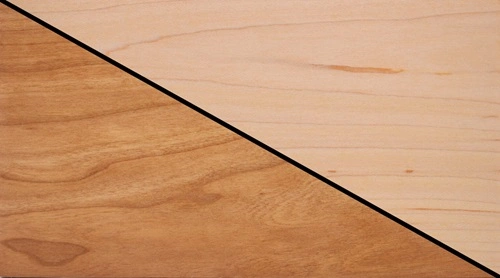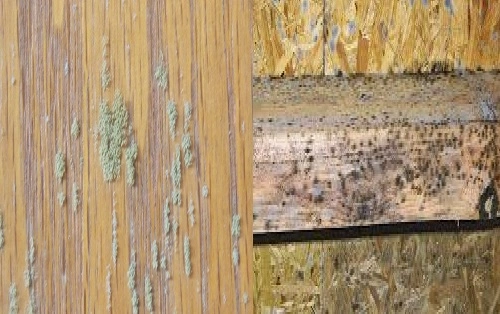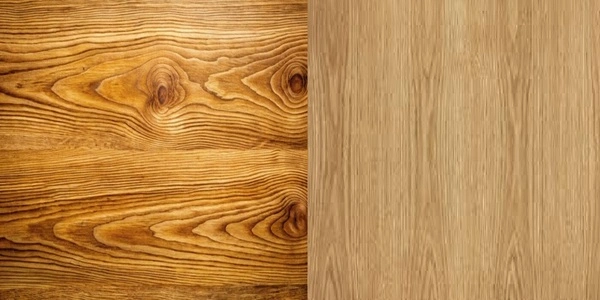When it comes to choosing hardwood for furniture, cabinetry, or flooring, maple, oak, and cherry are among the most popular choices for homeowners, woodworkers, and furniture enthusiasts across the USA. Each of these hardwoods is prized for its durability, beauty, and versatility, but they also have unique characteristics that make them better suited for specific applications.
This article will provide an in-depth comparison of maple, oak, and cherry wood, covering their appearance, durability, cost, workability, and best uses, so you can confidently select the ideal wood for your project.
Overview of the Woods
- Maple (Acer spp.): Known for its light color and smooth grain, maple is a dense, durable hardwood often used in furniture, cabinets, and flooring. There are two main types: hard maple (sugar maple) and soft maple. Hard maple is much denser and more durable.
- Oak (Quercus spp.): Oak comes in two primary types: red oak and white oak. Oak wood is renowned for its strength, prominent grain patterns, and timeless appeal, making it a favorite for furniture, flooring, and cabinetry.
- Cherry (Prunus serotina): Cherry wood is famous for its rich, reddish-brown hue that darkens beautifully with age. It is often used in high-end furniture, cabinetry, and millwork because of its smooth finish and classic elegance.
Appearance and Aesthetics
- Maple Wood:
Maple has a light, creamy-white color with subtle grain patterns and occasional darker streaks or knots. Its smooth, fine grain gives it a clean, modern look. Maple is often used for minimalist, contemporary designs and can be stained to mimic more expensive woods. - Oak Wood:
Oak features a more pronounced grain pattern compared to maple. Red oak has a warm, reddish tint, while white oak has a light tan to grayish tone. The dramatic grain patterns give oak a traditional, rustic charm, making it perfect for classic or farmhouse-style furniture. - Cherry Wood:
Cherry is prized for its rich, warm tones that start as light pinkish-brown and deepen to a deep, reddish-brown as the wood ages and is exposed to light. Its fine, straight grain and smooth texture make cherry wood a popular choice for elegant and timeless furniture pieces.
Winner: It Depends
- Choose maple for a light, clean look.
- Choose oak for prominent, rustic grain patterns.
- Choose cherry for a rich, sophisticated appearance that ages beautifully.
Durability and Hardness
The durability of hardwood is measured using the Janka Hardness Scale, which indicates how resistant the wood is to dents and wear.
| Wood Type | Janka Hardness Rating | Durability |
|---|---|---|
| Hard Maple | 1450 | Very durable; resists dents and wear well |
| Red Oak | 1290 | Durable; strong and hard, but prone to scratches |
| White Oak | 1360 | More durable and water-resistant than red oak |
| Cherry | 950 | Moderately durable; softer than maple or oak |
- Maple Wood:
Hard maple is exceptionally durable and dense, making it ideal for high-traffic areas like flooring and heavy-use furniture. It resists dents and scratches better than oak or cherry. - Oak Wood:
Oak is also highly durable, with white oak being slightly harder and more water-resistant than red oak. Oak’s strength makes it suitable for furniture, cabinetry, and flooring, but it can show scratches more easily due to its open grain. - Cherry Wood:
Cherry is softer than maple or oak, making it more prone to dents and scratches. However, it’s still a durable wood for furniture and cabinetry, especially when properly maintained.
Winner: Maple for durability and dent resistance, while white oak is best for water resistance.
Workability
- Maple Wood:
Maple is dense and hard, which makes it somewhat challenging to work with hand tools. It can burn when cut with power tools, so sharp blades and careful handling are essential. Maple holds screws and finishes well, but its hardness can make staining uneven. - Oak Wood:
Oak is relatively easy to work with because of its open grain. It takes stains and finishes exceptionally well, making it popular for projects where you want to highlight the grain pattern. However, its hardness can cause dulling of tools over time. - Cherry Wood:
Cherry is a dream to work with for many woodworkers. Its fine grain and medium hardness allow for smooth cutting, shaping, and sanding. It takes stains and finishes beautifully but naturally darkens with age, so staining is often unnecessary.
Winner: Cherry Wood for ease of workability and finishing.
Cost
- Maple Wood:
Maple is moderately priced, with hard maple being slightly more expensive than soft maple. It offers excellent value for its durability and versatility. - Oak Wood:
Oak is affordable and widely available, with red oak being less expensive than white oak. White oak costs more due to its water resistance and popularity in furniture and flooring. - Cherry Wood:
Cherry is considered a premium hardwood and is typically more expensive than maple or oak. Its high cost is justified by its beauty, aging characteristics, and use in fine furniture.
Winner: Oak for affordability; maple offers mid-range value, while cherry is ideal for premium projects.
Best Uses
- Maple:
- Flooring (high-traffic areas)
- Kitchen cabinets
- Furniture (modern or minimalist designs)
- Cutting boards and butcher blocks
- Oak:
- Furniture (traditional and rustic styles)
- Flooring (red and white oak)
- Kitchen cabinets
- Interior trim and moldings
- Cherry:
- High-end furniture
- Kitchen cabinets
- Decorative millwork
- Fine woodworking projects
Which Wood Should You Choose?
- Choose Maple If:
- You need a durable, dent-resistant wood for high-traffic areas like floors or cabinets.
- You prefer a light, clean, and modern aesthetic.
- You’re working on a mid-range budget.
- Choose Oak If:
- You love prominent grain patterns and a classic, rustic look.
- You need durable wood for furniture, floors, or cabinetry.
- You want an affordable yet strong option.
- Choose Cherry If:
- You’re building high-end furniture or cabinetry.
- You appreciate the rich, warm tones of cherry wood that darken over time.
- You value ease of workability and a sophisticated appearance.
Conclusion
When comparing maple, oak, and cherry wood, your choice will depend on your project’s needs, budget, and aesthetic goals. Maple excels in durability and versatility, making it perfect for modern homes. Oak offers timeless appeal with its strong grain and strength, ideal for rustic or traditional styles. Meanwhile, cherry stands out for its elegance, ease of use, and rich color, making it the premium choice for fine furniture.
By understanding the unique characteristics of each wood, you can confidently choose the material that will bring beauty, function, and value to your home for years to come.


